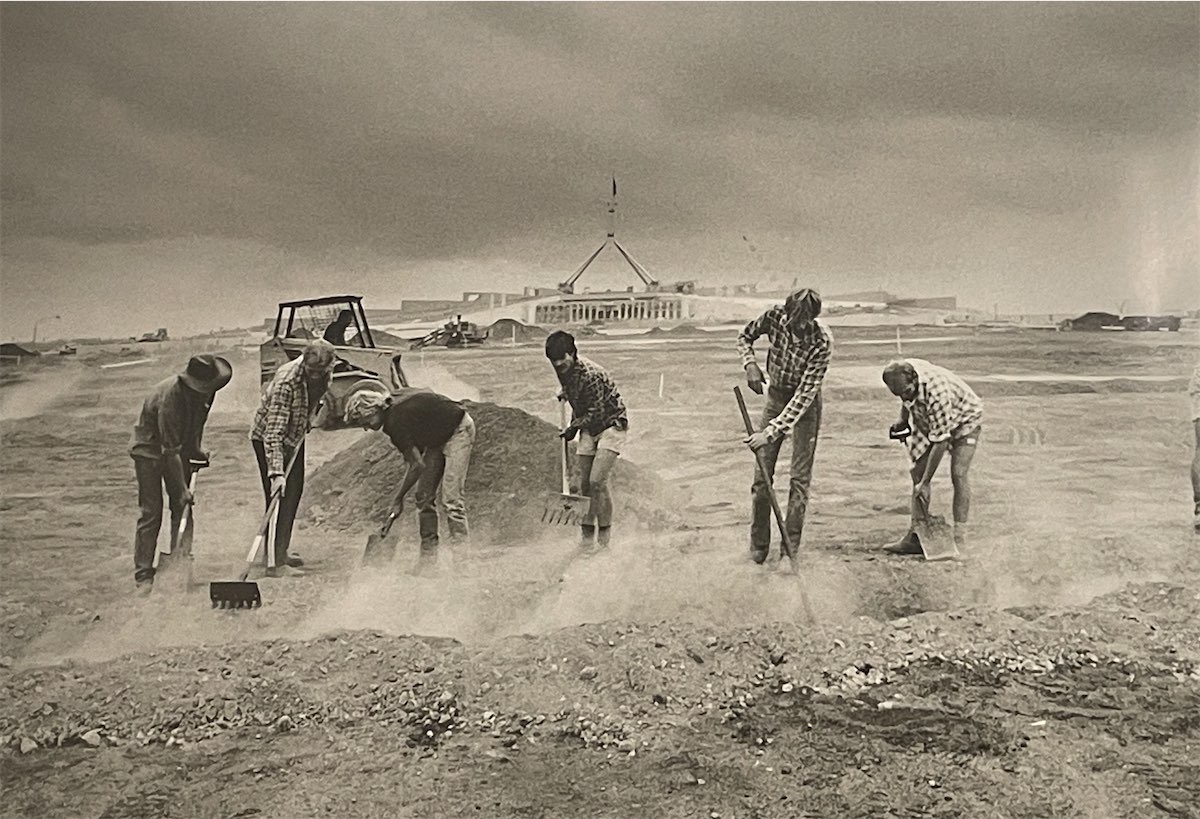
THE devil’s in the detail for the Canberra Museum and Gallery’s new exhibition, “Capturing Canberra: CMAG’s Press Photography”.
Based around the 2018 acquisition of 3560 silver gelatin photographic prints of Canberra digitised, accessioned and catalogued by CMAG staff during lockdown, this show is the first time these photos have gone on display – 139 in all, drawn from between 1913 and 1994, before the digital era.
Most are sized at a modest A5, although a selected number have been blown up to create focus, but the photos demand a careful look, as they represent the work of generations of press photographers based in Canberra.
Many of the images were featured in articles, news and front pages of “The National Times”, “Australian Financial Review”, “The Canberra Times” and “The Sydney Morning Herald” and a section titled “The Men and Women Behind the Camera,” also features audio recordings of photojournalists Rick Stevens, Graham Tidy, Rob Little and Lorrie Graham (the first female cadet photographer for the “SMH” and eventually pictures editor and chief photographer at “The National Times”).
Is it art? Well, it doesn’t have to be, as this is a social history exhibition, but after a long career spent working with brilliant press photographers, I confess to a strong admiration for their work.
Unlike many art photographers, who have time to consider the background, subject and circumstances, press snappers often have seconds to decide what to shoot.
A walk-through of the show with senior curator, social historian and geographer Hannah Paddon, confirmed my inclinations.
The works have been grouped under a series of themes, with three-dimensional displays and hands-on activities to accompany the two-dimensional photographs.

There is, for instance, an immersive mock darkroom where you can develop and enlarge photographs the old way. Graham Tidy’s Nikon jacket, media passes and a complimentary letter from Dame Pattie Menzies feature in one showcase. There’s a fun newsroom where you can write your own story and caption. And there’s the pride and joy of the exhibition, rare vintage press cameras, including Graflex, Thornton-Pickard, Leica and Nikon.
There are also smaller sections, one on images of Canberra disasters well before the hospital implosion, one on the Fairfax newspaper dynasty from which many of the photos came, and one on what’s written on the verso (backside) of photos.
Paddon tells me that the aim was to show the breadth and depth of stories enhanced by the “huge skills” of the photographers while also showing places and people.

The “Early Canberra” part of the exhibition begins with Lady Denman announcing the name of Canberra on March 12, 1913, but the walk-through quickly enough takes us to “Building Canberra”, pictures of the powerhouse under construction, the earliest days of Government House and a 1959 photograph of Roy Grounds’ the Australian Academy of Science “Shine Dome”.
An enlarged image shows workers preparing the grounds of the new Parliament House but there are less glamorous buildings too, such as a hostel where we see a 183cm public servant trying to fit into a 120cm bathtub.
In “Science and Technology” there are images of experiments in sport science, the Tidbinbilla Tracking Station and rather ancient computers and in “The Great Outdoors”, we see a real family picnic basket loaned by local historian, John Davenport and a blown-up photo of boats on Lake Burley Griffin when it was touted as Canberra’s prime tourist destination.
Paddon assures me it’s perfectly fine to jump around this exhibition – so there’s no sacred order of progress.

So, jumping around, a fun section is “Politics, Parliament and Public Servants”, where we see familiar figures such as a younger Gough Whitlam addressing a joint sitting of parliament in 1974, and three women politicians, including Ros Kelly, dressed up to the nines, Gareth Evans beaming over plans for Parliament House and Rosemary Follett taking office as the ACT’s first chief minister in 1989.
“Captivating Images” shows two Aboriginal cadets at Duntroon in 1984, an attack on the Iranian embassy in 1992, a cat (later rescued) stuck in Parliament House and a 1972 picture of a chef at Parliament House creating a sculpture of a brown dog in margarine.
My favourite section is the one on “Activism”, taking in anti-nuclear protests, images of women chained to the bar of the Civic Hotel agitating for the right to drink there, a protest at the Causeway Hall and, most dramatic, anti-Vietnam War demos, with an impressive picture of students burning fake draft cards.
“Capturing Canberra: CMAG’s Press Photography”, Canberra Museum and Gallery, until January 28.
Who can be trusted?
In a world of spin and confusion, there’s never been a more important time to support independent journalism in Canberra.
If you trust our work online and want to enforce the power of independent voices, I invite you to make a small contribution.
Every dollar of support is invested back into our journalism to help keep citynews.com.au strong and free.
Thank you,
Ian Meikle, editor








Leave a Reply